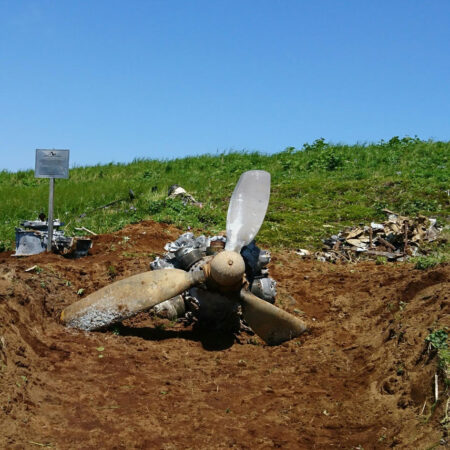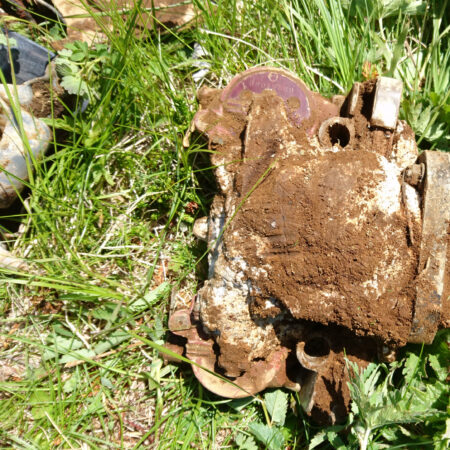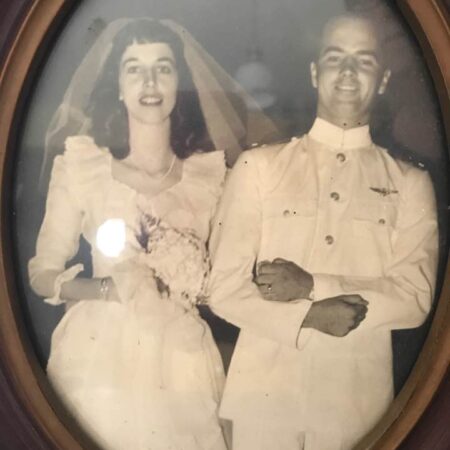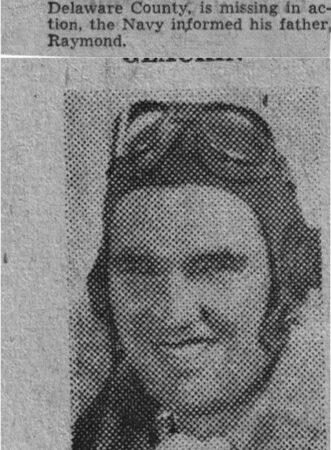VB/VPB-135, 2nd tour, May- October 1944
Preparations For the Second Tour
3 January to 15 April 1944: training with PV-1 type aircraft for duty in the Northern Pacific, with special emphasis on instrument flying, bombing, gunnery and navigation at Ault Field, Whidbey Island, WA.
This squadron was a special unit whose mission was to photograph the Japanese Home Islands of Paramushiro and Shimushu at the Northern end of the Kuriles in an attept to discover the full extent of Japanese military activities.
Meager training in the use of photo-flash bombs in connection with night photo- reconnaissance training was done. During this training period the need for more accurate navigation had been established. As a result, eighteen commissioned navigators were assigned to the squadron. There were eighteen full crews, each crew consisting of three commissioned officers and four enlisted men.
18 February 1944 five new PV-1s were assigned to the Squadron to total of 10 planes, including BuNos 48880 and 48937.
Other BuNos flown during March 1944: 29121, 33121, 29129, 29137, 33137, 29930, 29767, 34630
Aircraft BuNo and movement.
Format: Squadron Code (R=replacement), BuNo, Date moved out of the Squadron, Destination, Remarks
Click on the image to expand the photo
The squadron departed for Attu, T.A. on 16 April 1944 in fifteen PV-1 planes with a complement of 56 officers and 76 enlisted personnel.
16 April 1944 PV-1 of Lt. James McNulty, BuNo 48880, suffered major damage by Army handling during a hangar fire in Yakutat, enroute to Adak. The plane was transferred to Seattle, WA for overhaul.
Lt. Vivian’s diary: “One of the crewman had removed the tail wheel and was patching the tube when the word “Fire” was passed. This ship was blocking the exit of all planes and it could not be pushed because the tail wheel was off. Someone threw a a steel cable around the tail and a tractor hauled the ship to safety. But not until it had snapped the strut lowering the under gun station onto the deck. The cable bit through the soft aluminum doing major damage. All the remaining planes were pushed to safety. The (damaged) plane had to be returned to Seattle.”
19 April 1944 VB-135 arrives to Adak for LORAN training until 1 May. While there, some crews were scheduled to perform operational searches.
27 April 48937/11V lost at sea with all hands during special test search flight on the use of LORAN for long-distance navigation SW of Adak.
Crew: Lt. James J. McNulty, Jr.; James G. Rocke; Leroy M. Sellers; Richard L. Jackson; Roman C. Czaplick; James J. Duffin; James L. Gartland; and William B. How.
Lt. Vivian’ s diary: “Near the conclusion of our (LORAN) schooling, each crew took his plane out on a short navigational flight and see how this new gear operated under flight conditions. Jim McNulty borrowed Bill Clapham’s plane for his LORAN flight. He never returned from that flight. We received just one message from him that indicated he was having engine trouble and was coming in on one engine. The entire squadron was immediately alerted. We searched for two days in the area without so much as seeing a floating object. It was the opinion that he was too low and too heavy for just one engine.”
VB 135, arrived to Casco field, Attu, AK on 5/2/44 with 12 PV-1s after completion of advanced operational and navigational training in LORAN equipment.
The primary mission of the squadron was to fly night photo reconnaissance missions over the northern Kuriles in an attempt to discover the full extent of Japanese military activities. Those flights were the outgrowth of operations by a previous “Ventura” squadron which had proven that by taxing the plane to its greatest capacity, installing extra fuel and over loading it by three to four thousand pounds, Paramushiro could be bombed in nuisance raids.
5 May to 14 June 1944: night photo- reconnaissance missions over Paramushiro and Shimushu. Below are some mission highlights.
5/5/44: combined mission (9PV-1s) with 5 PV-1 of VB-139 and one PBY5A of VP-61, heavy AA fire was met.
Lt English 12V 48938
Lt Mabus 11VR 48930
Lt Blakeney 3V 48891
Lt Vivian 5V 48919
Lt Schuette 10V 48936
Lt Clark 2V 48889
Lt Clapham 8V 48933
Lt Cmdr Stahl 7V 48928
Lt A.A. Wheat 1V 48733 c/n 237-5969, is MIA. Radio Tokyo announced one plane was shot down over Northern Kuriles. Crew:
Ens Wm. W. Schatzer, Ens Roger Iani, Wm. M. Austin, AMM2c, Theodore Green, ARM1c, Marion J. Catt, AOM2c
5/12-5/13/44: the first night reconnaissance and bombing mission to Shimushu with seven PV-1s.
VB-135 Ventura 9V BuNo 48934, piloted by Lt. Hardy V. Logan Jr., was shot over the water by J1N Gekko of 203 Ku flown by Flight Chief Petty Officer Yasuro Baba 馬場康邦 and Flight Warrant Officer Yoji Amari 甘利洋司 13 May at 21:39, Japan time. MIA are Lt. Hardy V. Logan Jr., Ens. Anker K. Jeppesen, Ens. Raymond Langston Jr., AMM2c Joseph E. Copeland, ARM2c James L. Beaulieu, and AOM3c Donald J. Farrell.
CPO Baba survived the war. WO Amari died in a Kamikaze attack off Okinawa 13 April 1945.
Another J1N Gekko flown by Flight Warrant Officer Masanobu Maehara 前原眞信 and Flight Chief Petty Officer Kunizo Miyazaki 宮崎国三 did not return from the interception mission. Later investigation discovered the second “Gekko” was shot down by Japanese Army antiaircraft artillery by mistake.
5/17-5/18/44: night photo recon and bombing of Shimushu – Paramushiro #3
Lt Bone in 6V sustained damage to the tail window from AA fire.
5/23, night mission #7
2V BuNo 48889 one minute after takeoff crashed into the sea and exploded, engine failure, seven crew members killed in action.
Crew: Pilot Lt.(jg) Carl E. Clark (“Big” Clark); Lt.(jg) Kemble White, Jr.; Ens. Vernon A. Wagner; AMM3c James W. Reeve; AOM3c James J. Lee; AMM2c Walter J. Burkowski; ARM2c John Jalacic.
5/17-5/18/44: night photo recon and bombing of Shimushu – Paramushiro #3
Lt Bone in 6V sustained damage to the tail window from AA fire.
5/23, night mission #7
2V BuNo 48889 one minute after takeoff crashed into the sea and exploded, engine failure, seven crew members killed in action.
Crew: Pilot Lt.(jg) Carl E. Clark; Lt.(jg) Kemble White, Jr.; Ens. Vernon A. Wagner; AMM3c James W. Reeve; AOM3c James J. Lee; AMM2c Walter J. Burkowski; ARM2c John Jalacic.
5/29/44: Solo plane (5V, BuNo 48919) day recon mission- unsuccessful due to overcast. The first daylight run over Kuriles by Navy planes was performed by Lt. (jg) Blakeney.
Cameras :
Three F-56 with 5 3/4 inch lenses in the tail, center for verticals, starboard and port at 32 degrees to the vertical. From 9000 ft it covered a strip of approx. 9 miles in width. Each camera had films for 200 exposures and was operated electrically.
K-17 camera with 12 inch lens was mounted in the bow for additional vertical pics, loaded for 100 exposures and electrically- operated.
F-56 with 20 inch lens- hand held and hand- operated for obliques trough the porthole on the port side of the plane, loaded for 200 exposures.
Two hand- held and hand- operated K-20 cameras with 6 3/8 inch lenses for incidental pics, 50 exposures in each.
In comparison, standard camera equipment for night photo missions included just one K-19A in the bow with 13 1/2 inch lens, electrically- operated, tripped by solenoid. Four photo flash bombs of 1 million candle power brilliance – in the tail; the rear bomb bay filled with fuel. The rest of the bomb load was a dozen of 22-pound fragmentation bombs under the turret, for harassing purposes during photo runs.
Lt. (jg) Blakeney crossed the shoreline of Kamchatka about 40 miles north of cape Lopatka, then turned south along the west coast of Kamchatka in an effort to prevent radar detection. Low clouds over Shimushu prevented taking photos and Lt. (jg) Blakeney turned to Attu, passing below cape Lopatka on the course 230T.
6/1/1944: Solo plane day reconnaissance flight, Lt. Blakeney in 5V, 315 photos of moderate quality obtained.
6/1/1944: Night photo reconnaissance and bombing mission, 4 planes
Considerable development at Lake Bettobi, extensive road system and second airstrip in central Shimushu noted.
6/8/44 Conference at the FAW HQ on completing plans for bombardment of Matsuwa Island by Task Force 94. The planes are to bomb Shimushu and Paramushiro airfields the day before, and cover the force retirement within 500 miles of Attu.
6/11/44: Daylight photo recon of Shimushu. Lt. Vivian in 2V. The weather over Shimushu was great and Lt. Vivian proceeded with a photo run before he obtained permission from the base. He was able to obtain a number of excellent photographs of Myoshino airfield, never photographed before, as well as high oblique pics of Kataoka airfield.
6/12/44: Daylight bombing Shimushu, Paramushiro
Lt. (jg) J. Clark in 6V was unable to orient himself in the fog over the area for 45 min, jettisoned bombs and turned to the base. Ditched his plane north of Agattu because of the fog and lack of fuel, everybody was rescued.
L. A. Patteson in 8V landed at Shemya (alternate base) due to fog.
14 June to 26 October 1944: daylight and night photoreconnaissance of the Islands of Paramushiro and Shimushu. Almost without exception, on all photoreconnaissance missions general purpose or incendiary and fragmentation bombs were carried to harass the enemy.
6/14/44: Daylight bombing and photo reconnaissance mission of Shimushu and Paramushiro.
Multiple Japanese fighters were encountered, two “Hamps” were reported damaged.
364 photos taken of Myoshino, Kataoka, Kashiwabara, Kakumabetsu, and Kurabu Zakii airfields.
Aircraft participated: 2V, 3V, 4V, 5V, 7V, 9V, 11V
Sparks in 4V passed over the tip of Lopatka on the way home; observed Soviet AA fire black bursts “a considerable distance” beyond the plane”
Lt. Bone in 9V: no communication since take-off. Probably, reached the target before the other planes. Was seen by Vivian flying low south across Paramushiro Strait under intensive AA fire, making erratic maneuvers, and “was obviously in difficulty”. Last seen turning toward Kataoka naval base. The first US Navy crew that landed in Petropavlovsk successfully.
Lt. Howard B. Schuette in 48934/11V approached the target together with 2V3 (Vivian), 3V3 (Mabus), and 7V3 (Clapham). Was seen making successful bomb run over Myoshino airfield, then crossing Suno Zaki 110* at 6000 feet in the midst of heavy AA bursts. Later reported to Vivian over the radio an oil leak in starboard engine and intent to land in Petropavlovsk. Lt. Mabus reported 3 fighters following Schuette’s plane at one time during the action. More about the 6/14/1944 and other photo missions is here.
6/18-19/44, second mission of the day, 4 PV-1s to Kurabu Zaki. Navigator of one of the planes sighted enemy fighter over Kurabu Zaki, but the plane did not attack. Lt. George A. Mahrt, piloting PV-1 BuNo 48938/12V, accidentally siphoned fuel overboard near Paramushiro, and was forced to land in Russia. His urgent message back to base was simple: “Out of gas. Russia.” Still in the dark as he crossed into Soviet territory, Mahrt found the area fogbound. He orbited above the clouds until dawn, when he spotted a hole in the weather. Mahrt slid the bomber through the gap in the clouds, then saw rising terrain ahead. Too late to react, the Ventura plowed through a stand of trees. One wing slammed into solid lumber. The nose was ripped off forward of the cockpit as the plane plowed through the forest. Fortunately, the crew escaped without serious injury and there was no fire. Crew: Pilot Lt. George A. Mahrt; Copilot Ens. Richard Henry Johnson; Navigator Ens. William A. King; ARM3c Clifford Clarence Patzke; AMM2c William Edward Dickson; AOM2c Richard Thomas Everard, Jr.; AMM2c William Dewey Strom.
The aircraft crash site was rediscovered only in 2020. The images in the gallery below were taken on December, 4th 2020 and kindly provided by a historical search group from Kamchatka.

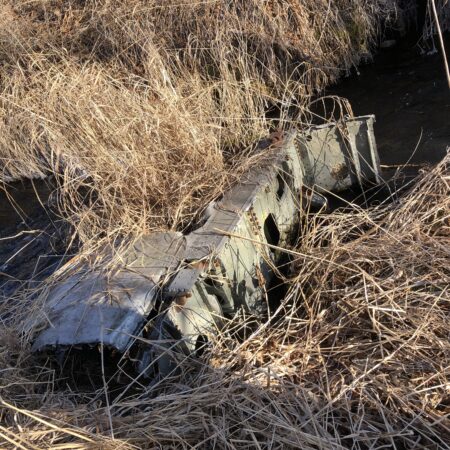

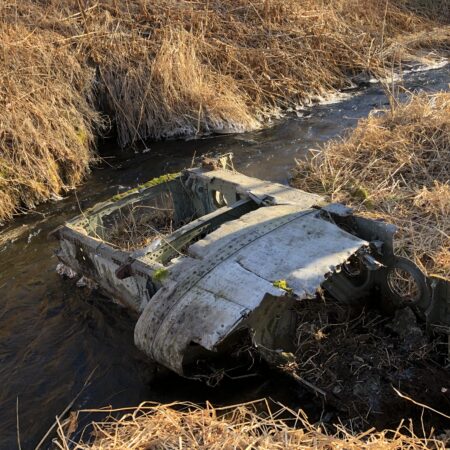
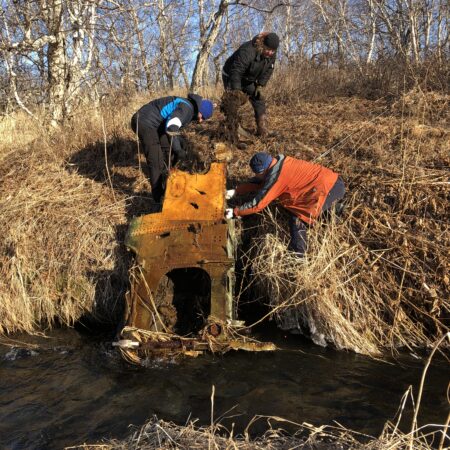
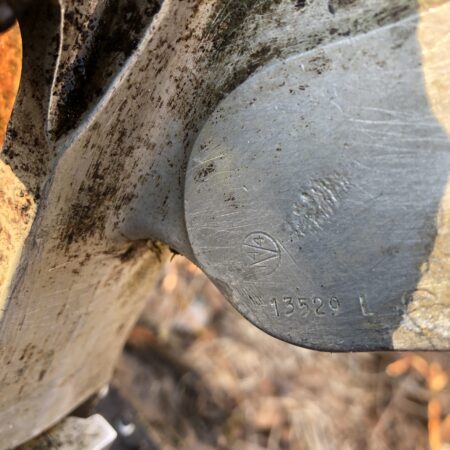




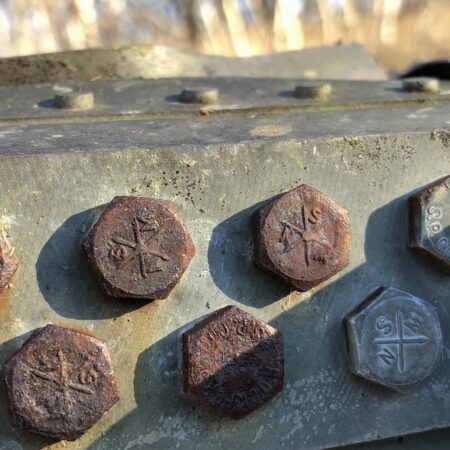

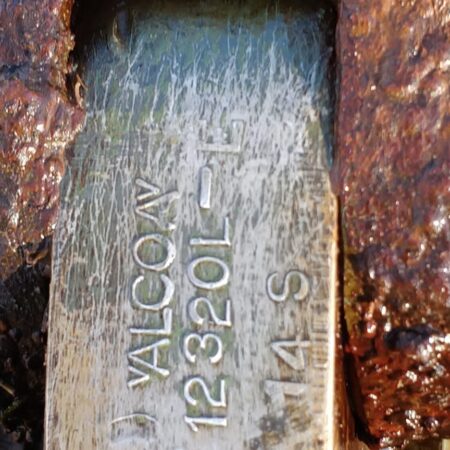
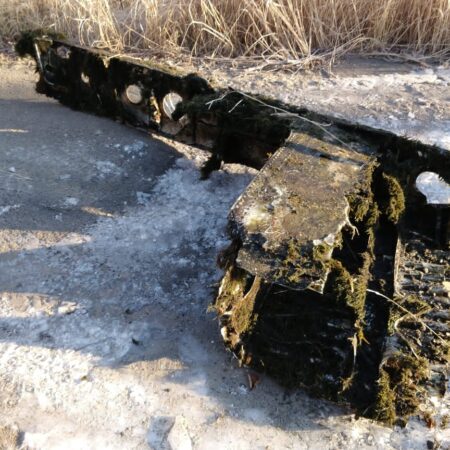
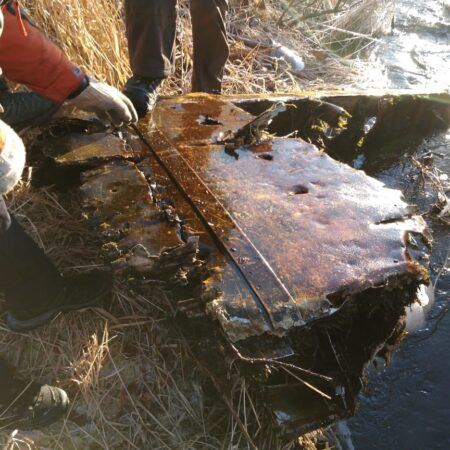
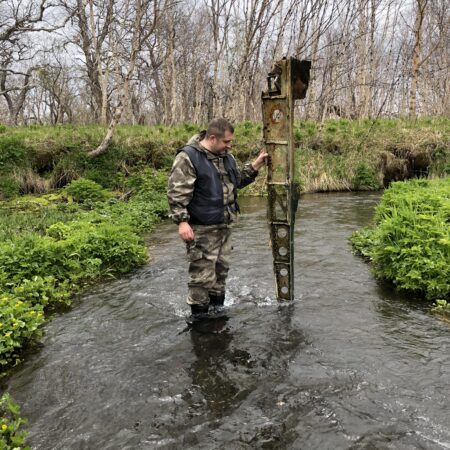



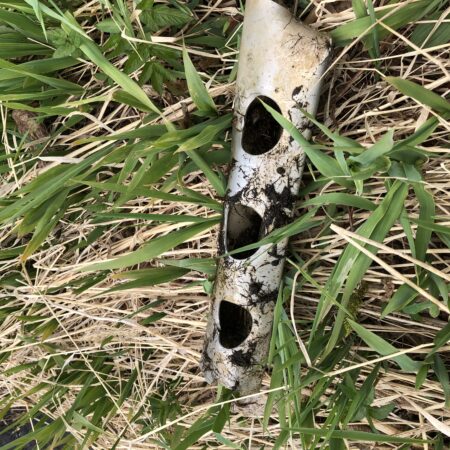
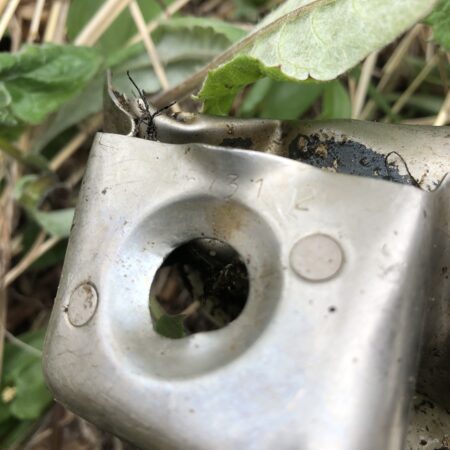

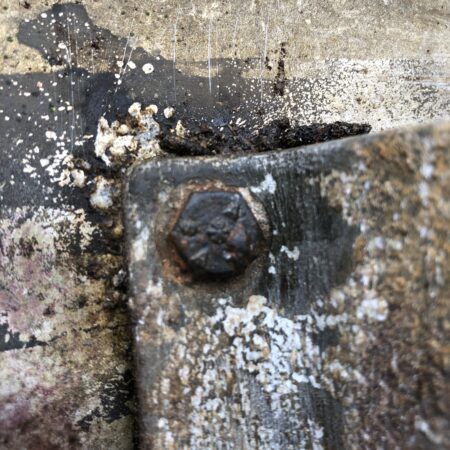

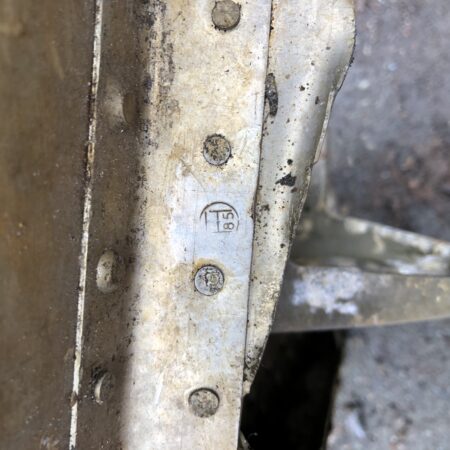


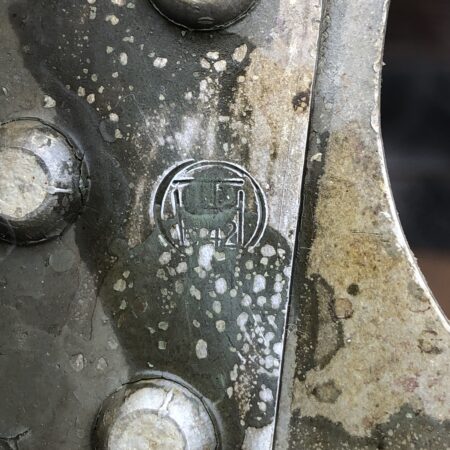
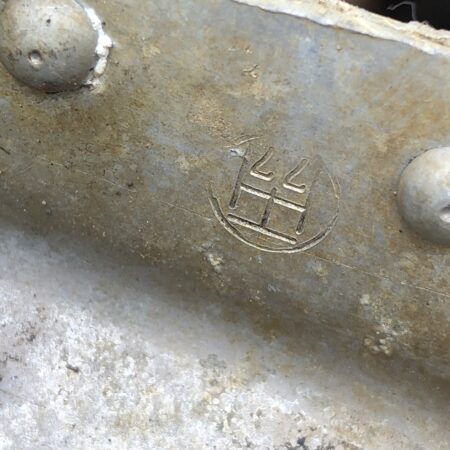

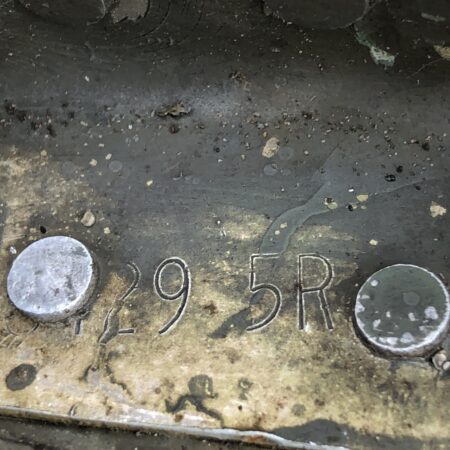

6/25/44: Daylight photo reconnaissance mission over Paramushiro. Lt. (jg) Patteson in 2V BuNo 48909.
121 photos of Kakumabetsu area and area below Kashiwabara along the NE coast
Attacked by total of 11 fighters, all “Hamps”(A6M3), 13 passes were made on his plane.
One “Hamp” was damaged, 1 probable kill (disappeared in clouds in back dive, before hitting the water)
600 feet of additional runway surfacing was found to be completed at Kakumabetsu strip.
6/26/44
Night bombing of Shimushu and Paramushiro (Kataoka, Myoshino, Kashiwabara)
Crews reported seeing fires in the central Shimushu, where no bombs were dropped, suggesting possibility of dummy fires set up by Japs to mislead bombardment.
7/10/44- Night bombing and photo recon of Shimushu, Paramushiro
Kurabu hangars- 1V, 2V, 7V, 8V, 10V (Patteson, Mason, Mobus, Clapham, English)
Suribachi airfield- 4V (Sparks)
The 1st mission after removal of the paint from plastic nose, which improved radar range to 65 miles for landfall.
7/22/44 Four planes met heavy enemy fighter opposition. All planes were identified as “Tojos” (Ki-44), their runs were made in echelon formation. One PV-1 reported starboard engine problem after being attacked by fighters, and low fuel, intended to proceed to Petropavlovsk. Lieutenant (jg) Jackson W. Clark in 7V, Bureau Number 48928, completed his bomb run over Miyoshino Airfield when he was jumped by four Japanese fighters (Ki-43s of the 54th Sentai), which continued to attack the PV-1 as it headed east for Attu before breaking contact about 100 miles from Shimushu.
“Although none of the crew was hurt, the bomber sustained significant battle damage. The right engine was steadily losing oil and there was not enough fuel to make it back to Attu. Lt. Clark decided to head for Petropavlovsk and reported the situation to Attu. He arrived over the Petropavlovsk airfield, circled it, and observed two other PV-1s parked on the edge along with several Russian fighters. One took off and intercepted the bomber. Its pilot wagged his wings and gave a hand signal to follow him down. Lt. (jg) Clark tried unsuccessfully to convince the Russians that he was on a training flight and his crew joined the two other Ventura crews in the navy station, just in time to help the Russians celebrate their “Red Navy Day.” (Otis Hays, “Home from Siberia”).
Crew: Pilot Lt.(jg) Jackson Wilson Clark; Ens. John Franklin Mathers, Ens. Berwyn J. Miller, AMM1c Hoyle Afma Simes, ARM2c John Brennan; and AOM2c Herbert Charles Rowe.
7/23/44 Daylight high altitude glide bombing mission
2V Vivian
10V Lt. Rumford: Offensive sweep with negative results, returned in Attu safely.
X13V Pool attacked by fighters believed to be “Tojos”. One is a probable kill from the bow guns, the other one was damaged (cowling broke off). Another two sections of the fighters were observed directly above, 4 or 5 planes in each, at the altitude 10 to 12,000 feet. Three crew members were injured, planes hydraulic system and inter phones were shot off, numerous holes in fuselage and tail assembly.
8V Patteson Bombed Kakumabetsu airfield, observing several fires. Then strafed several large fishing vessels offshore of the west side of Daigo Zaki. Meager but accurate AA fire met, Ens Rice (navigator) sustained slight head wounds
First colored photographs of Paramushiro ever obtained, see an example below.
7/24/44, VPB-135 Diaries:
“One PV-1 received battle damage during attack on the picket boat, and sent a message it was going to Petropavlovsk (48909/2, Lt John P. Vivian). Two other planes were attacked by seven “Tojos”. Two “Tojos” damaged. Radio Tokyo confirmed that one fighter was damaged, and another one did not return to the base.”
The presence of Ki-44 “Tojo” interceptors in the Kuriles is not supported by available Japanese documents. However, it is possible that on the peak of the Kurile air war, a small detachment of Ki-44s could have been sent there for a short period of time, to reinforce battle capabilities of Ki-43-IIs of the 54th Sentai.
8/12/44: One “Hamp” was struck by PV-1 turret fire and fell off damaged at 10,000 feet. Claimed as damaged (Lt. English, 2V).
8/20/44: One “Oscar” (Ki-43) made 2 passes on PV-1 48908 9VR2 (Lt. Mobus). As a result of turret fire, it was seen to fall over on its back and go down in a dive into fog at 500 feet.
9/1/44: Six aircraft took off, one returned, four could not orient themselves due to “reduced Russian radio beacon schedules”
9/10/44 Six planes, search duties to relieve PBY5 squadron for a day. Four returned uneventfully
Lt Sparks in 4V intercepted and shot down “Tenzan” of 553 Kokutai, that bursted in flames and crushed into ocean with no survivors.
PO1C Yoshimori Yuda, PO1C Nakano, PO1C Sachio Hachisuga (confirmed by Japanese records)
One Ventura radar bombed Kataoka, no results observed. Engine failure after bombing, set course for P-K, but was able to fix the engine, and returned to base (Lt. Pirtle).
9/11/44 48th mission. Four planes encountered heavy AA fire.
The squadron lost its 10th crew (the 9th in combat) and the 12th PV-1: BuNo 33278 11R2 (Former 25V of VB-139) Lt. (jg) McDonald crash-landed in Petropavlovsk after sustaining heavy damage from fighter attack.
Crew: Ens Kenneth G. Miles, Ens Donnie L. Broadwell, John W. Rosa, AMM1c, Jack G. Ross, AOM3c, W.F. Nicodemus, ARM2c
9/14, 9/16, 9/17, 9/18, 9/24, 9/25, 9/26:
4 planes each day, all turned back by patrols of enemy fighters without engagement. (Good weather, except for 9/26, when 1 plane was met by 4 fighters and retired, and the other 3 did not make it due to weather).
9/19/44, Four planes, radar drop and strafing runs at Hayake Gawa and Suribachi
16-18 October 1944: PV-1s of VPB-135 flew as a fighter cover for the Naval Task Force. Eleven sorties in total, each flight was approximately ten hours in length.
19 October the squadron was relieved of further duty in the Aleutians and ordered to prepare for transfer to the continental United States. In an exchange of PV-1s with Headquarters Squadron, five of the squadrons planes were retained and six were exchanged for seven others to provide a total of twelve planes to fly to Ault Field, Whidbey Island, Washington.
October 23-26: Attu to Whidbey:
29739, Lt. U. B. Holloway (Former VB-135, 1st tour and X6/Hedron). Possibly, decorated with six FAW4 mission marks on the port rudder.
29772, Cdr. P. L. Stahl (Former VB-136, 1st tour and X?/Hedron after 5/8/43). Possibly, decorated with six FAW4 mission marks on the port rudder.
33110, Lt (jg) L. Patteson (Former 1V/VB-136/1st tour and Hedron) (“Pip Squeak”). Possibly, decorated with six FAW4 mission marks on the port rudder.
33282, Lt. M.A. Mason (Former 26V/VB-139, later X20/Hedron, decorated with nine FAW4 mission marks on the port rudder)
33433, Lt. J. M. Pool (Former 36V/VB-139)
33352 6VR, Lt. J. T. Mabus (Former 29V/VB-139)
33359, Lt. A.C. Mobus (Former 35V/VB-139)
33345, Lt J. B. English 12VR as of 10/13/44, Ex X5/Hedron
34630, Lt J.F. Rumford (Former 30V/VB-139)
34639, Lt. P. E. Pirtle (Former X36/Hedron)
10/26/44 the squadron arrived to NAS Whidbey with 12 PV-1s
The tour of duty for the squadron extended from 16 April to 26 October 1944. During this period a total of sixty-three missions were flown over the northern Kuriles involving a total of two hundred eighty-seven sorties. As a result of combat missions, nine crews and ten planes were lost. Five of the personnel were wounded.
At least three USN Venturas continued their service in Soviet VVS after landing in Kamchatka. One of them was 7V of VB-135, BuNo 48928. After repairs, it served with the 2nd Squadron of 903rd Bombardment Regiment, 83rd Aviation Division. 0n October 11th, 1945, the plane crashed after take off from Kataoka airfield with six crew members and four passengers on board. The most likely cause of the crash was a combination of overload and cargo balance. “Pat” Patteson commented as follows:
“The weight and balance were very critical factors for the Ventura and became worse with increased gross weight. On the takeoff roll our crews in the cabin were instructed to take their position in the navigator’s compartment. They looked like a sports huddle. We were nearly 3,000 lbs over gross and the CG had to be kept inches from the wing’s spar distance”.
Photos in the gallery below were taken in 2017 at the crash site near former Kataoka airfield in Shumshu island by members of the Russian historical search group who erected a memorial sign there with the names of those who perished in the plane crash. Images were kindly provided by Mr. Artem Bandura of Sakhalin.




